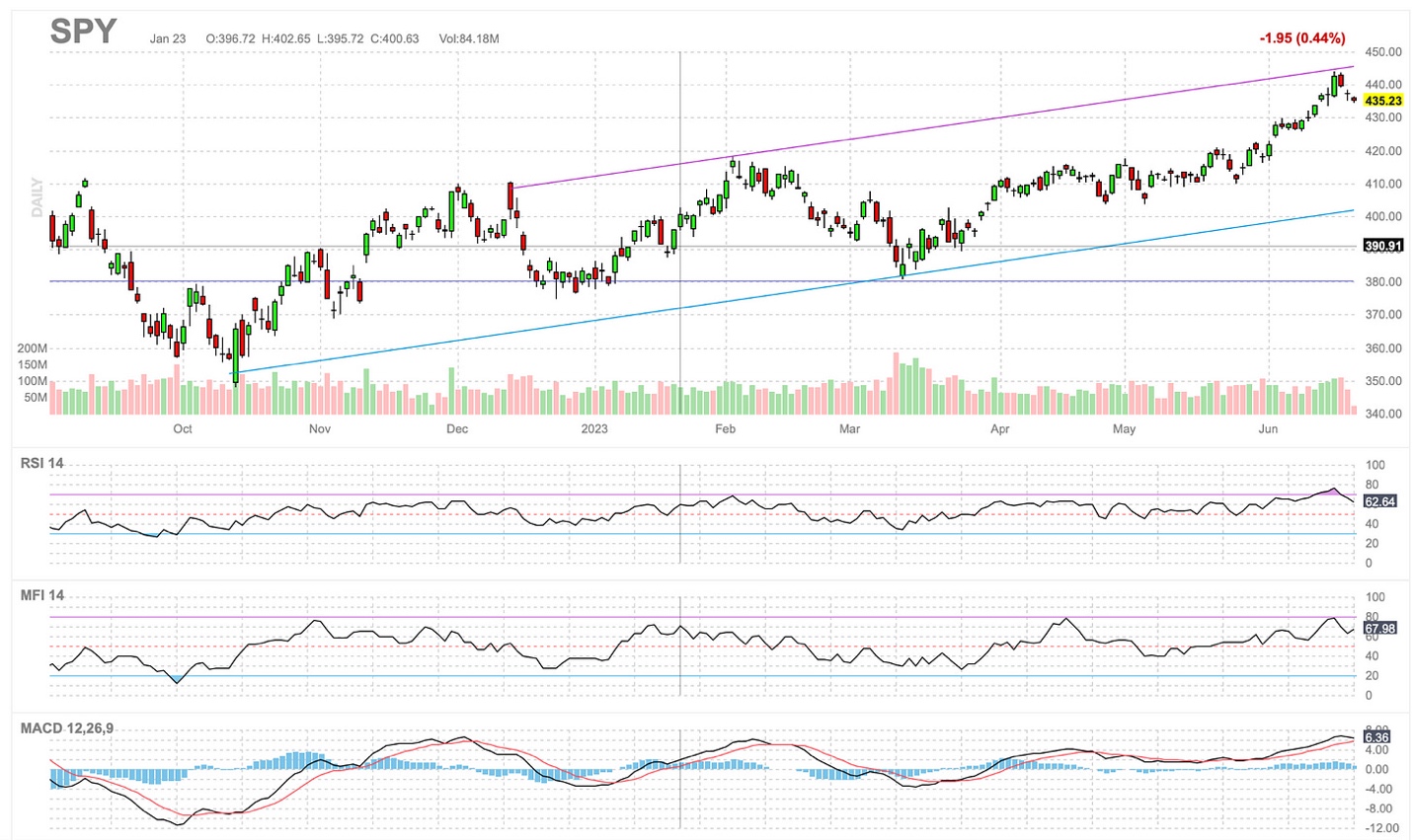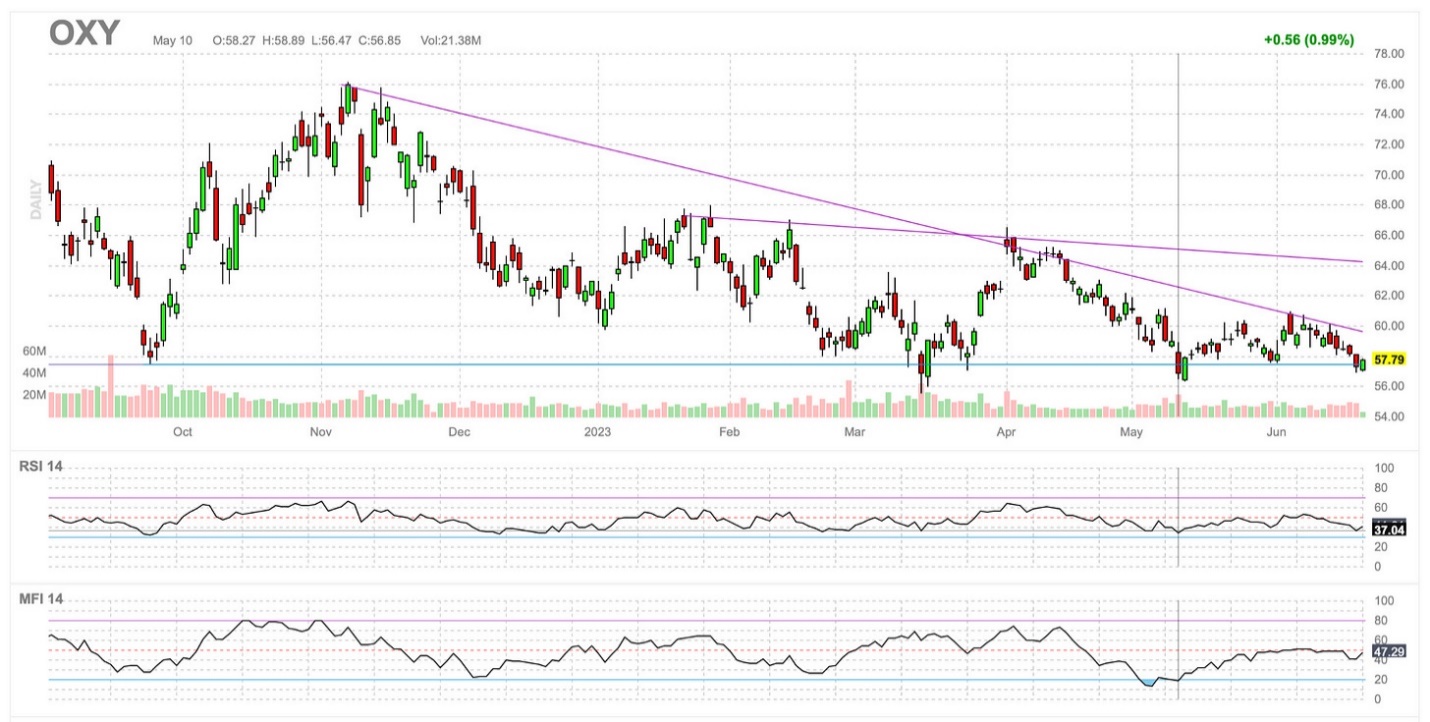postcards from the florida republic
An independent and profitable state of mind.
We’ve had three straight days of weakening buying across the markets. That’s typically an early bearish sign – a big red flag that this market could drop sharply over the next two weeks.
So, it’s time to tighten up your stops.
It’s time to add some hedges.
Momentum — in my world — is a measurement of capital inflows and outflows. I measure thousands of stocks and bring everything down to a single measurement: Red, Even, or Green.
If momentum goes negative, you need an action plan. When we have three straight days of weakening buys – and what looks like a pending turn on the daily moving average convergence/divergence (MACD) reading for the S&P 500 and Nasdaq 100 – it’s time to prepare.
When momentum turns negative there are these six simple things to know – “rules” for getting your wealth through safely to the other side.
Let’s take a look…
Rule 1: Cash Is Your Friend
You want to have a solid cash balance when momentum turns negative. In my trading account, I move to heavy cash.
I’m out of long positions, and I position my cash for buying opportunities. Since I’m an active trader and investor, I focus on key technical levels that allow me to target new entry points. The move to negative momentum is very important as I protect as much capital on my balance sheet as possible. This is how I can buy for a dollar and sell for two dollars several times a year.
Rule 2: Don’t Sell Puts, Unless… (See Rule 6)
If, in a moment of weakness, I find myself impulsively thinking “maybe I should sell put spreads to gain an entry point,” I stop… and realize it’s not the time for me to open new positions… If I sold previous cash-secured puts or put spreads, I entered this with the mindset that I was willing to buy the stock at a lower price. If I’m up on my current position, now would be a good time to take profits. If I’m down, now might be the time to assess whether I want to sell spreads at an even lower price.
When momentum goes negative, selling can be indiscriminate. That means nothing is safe. The last thing I would want to do is have exposure to a $50 put when the downside for a stock is much lower.
Rule 3: Learn Implied Volatility Rank
One of the great rules that I learned from my time with Tastytrade was how to know the difference between cheap options and expensive options. I use a tool on Tastyworks called Implied Volatility Rank (IVR).
This measures the implied volatility of a stock today compared to its IV during the previous 52 weeks of the year.
If a stock has an IVR of 25, its implied volatility is lower than the 75% of the trading days over the last year. If it’s at 80, that means it’s higher than 80% of the days in the last year. The general rule is that if IVR is under 25, it’s cheap to buy calls or puts. If it’s over 30, I might want to sell calls and puts. And if it’s really elevated, that’s the time for me to do exotic trades like Iron Condors. This can also tell me which stock to trade and how to trade it compared to other ideas.
Rule 4: Sell Credit Spreads in Times of Negative Momentum
If a stock is expensive to short with a long put, there are other “options.” I can sell vertical call spreads on stocks with a high implied volatility rank (IVR) and benefit if the stock trades sideways or declines in value. I’d be selling someone the right to purchase a stock from me at a higher price. If the stock price falls, the underlying call will fall as well, thereby reducing the value of the call spread.
I use a higher call on the trade to protect myself against any surprise upside on a stock — think a buyout or sudden momentum reversal.
Rule 5: Look for Oversold Levels on the SPY and IWM
Finally, the market tends to sell off fast and furious in negative-momentum environments.
From June 8, 2022 the SPDR S&P 500 ETF (SPY) went from overbought to oversold in about seven trading days. Following the SPY’s move on the Relative Strength Index (RSI) to under 30, the market was oversold.
Oddly enough, no one had the guts to buy stocks.
The same thing happened in October 2022. We had oversold levels on RSI and MFI daily levels in early October. It happened again in December… and March too…
Watch for similar behavior in the important small-cap ETF, the iShares Russell 2000 ETF (IWM).
Want to know who purchased shares in oversold conditions and made a fortune?
Robots.
Algorithms — which have no emotion or fear — scooped up stocks in deeply oversold conditions and kept buying for a month.
Rule 6: Wait… And Sell Puts in Very Specific Conditions
“Oversold territory” is also a very good place to sell puts on stocks I want to own when we’ve reached the moment of “peak fear.” If the RSI on a stock is at 25, and it’s a great blue-chip company, I use the high volatility and the fear to sell puts on a stock maybe 15% to 20% lower than its current level.
As you know, Occidental Petroleum (OXY) sits atop my list for this strategy.
If the stock does fall to that point, I’ll have an absolute bargain. But if the stock does rebound from overbought, I can repurchase the option for less and pocket the difference.
With that, I’m ready for battle. It’s time to trade momentum.
This will be a very good time to be active… Let’s get after it.
 To your wealth,
To your wealth,
Garrett Baldwin
Florida Republic Capital (Available on Substack)
About the Author
Garrett Baldwin is a globally recognized research economist, financial writer, consultant, and political risk analyst with decades of trading experience and degrees in economics, cybersecurity, and business from Johns Hopkins, Purdue, Indiana University, and Northwestern.





